My time in Medellín, Colombia has been transformative to say the least. The people, art, communities, music, and dance — all surrounded by sweeping landscapes of green coalesced to create the vibrance that is Medellín. And in between the empty spaces of this city is where the heart fills first. This emptiness is where new ideas come to fruition. A space is born to breathe and take pause for a moment in silent contemplation; these are the spaces between the notes, where the music is formed. In Medellín, you find a rampant city of exuberance, noise, and commotion right beside the raw-natural beauty of the flora and fauna of a serene landscape.
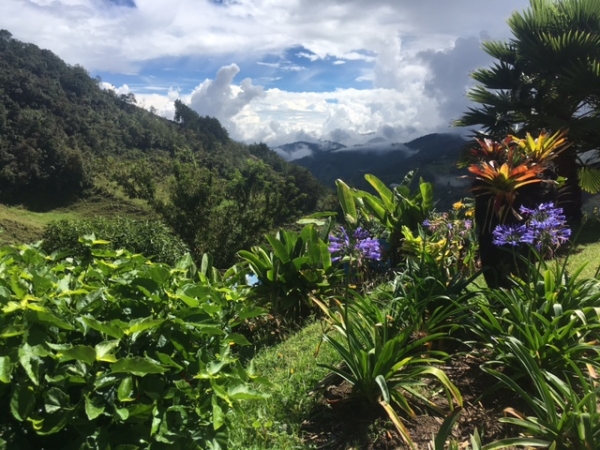
Our goal with the American Arts Incubator program was never to solve any issues, but rather to address difficult topics through digital arts and to bring about awareness. The topic for Colombia was admittedly a difficult one to address: peace and social inclusion. How do we as individuals address this in our day-to-day lives? How do we create inclusive spaces and communities? This main investigative question is still very much active and in debate (as it should be).
There were hardships, growing pains, and even conflicts within our own groups while discussing this heavy topic, but this was key to the very idea of inclusion itself. We sought different angles of engagement and created the necessary dialogue. This was where the work of many individuals combined to create one inclusive view — a view that included different ideals presented within a single framework. With these unique perspectives combined as a whole, we could begin to highlight the diversity of a culture striving towards peaceful and inclusive community interactions.
For me personally, I learned perhaps the greatest lesson of all, and no less than through my own words that I preached over and over — that of listening. In the beginning I failed to do so with my whole heart. I realized at an important turning point in my exchange that the process of using an interpreter had led to my own disregard of the country's language.
The majority of workshop participants did not speak English, but gradually each one of them began to try. They spoke whatever English they knew in order to include me. This was when I began to see the true humility of the Colombian people. Though many of them were not fluent or even confident in their words, they tried for my sake and from their desire to spread compassion and inclusion. This act made my heart grow heavy. Through translation, I was missing out not only on the meaning of the words, but the very sounds of their voices, speech patterns, and subtle inflections. By relying on my interpreter, I had trained my ears to tune out the Spanish language just as one would tune out the drone of an air-conditioner or the hum of a fan. Their voices became white noise and I was no longer actively listening.
This realization hit me with a force so strong that it sent my heart to the floor, so I began to ask my new friends to speak to me in Spanish. I asked questions en español, and for the first time I fully engaged myself in the process of learning the language. I figured if they were brave enough to try with me, that I should at least return the gesture. As soon as I began to try, an entire world opened up to me. A new bond was formed and I can say with full confidence that we all became closer friends.
In the following days I awoke with Spanish vocabulary on my mind. I engaged and participated in ways not previously explored which created an exciting feeling that stormed my bodily presence with an epiphany of pure love. And this love was something that I had been disconnected from at the beginning of my exchange. The simple act of listening and letting go of my own inhibitions created a new awareness within myself.
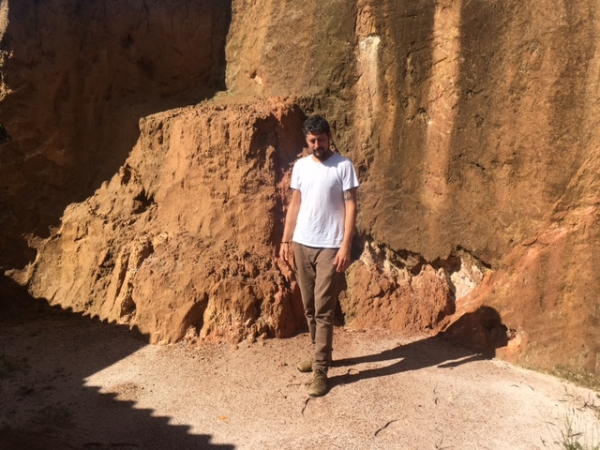
This exchange has been one of the most profound experiences for me, and I owe it all to the amazing people that showed me the way to social inclusion. Through their welcoming and accommodating ways, the Colombian people have given me the most valuable lesson of all, and I thank them dearly for their compassion.
I don’t know what comes next in the coming months or years beyond, but I do know that some very valuable relationships were formed and I can say with certainty that it changed at least one person's perception of what social inclusion can mean.
Opening night.
The exhibition at Colombo Americano was a huge success! All of the teams came together to pull off an amazing show. In total, we had four groups who produced seven projects now on display in the gallery. The work ranged from video projection mapping, live performance, photography, sound installations, and community outreach programs.
We had a tremendous review from the crowd, and as you can see from the photos, opening night was packed!
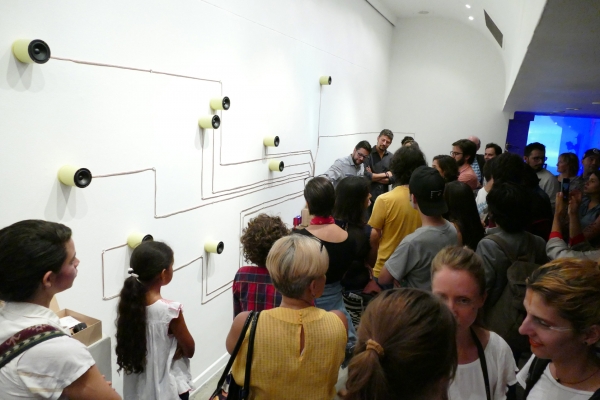
Here you can see the project entitled Escucha, which aims to give voice to all by allowing visitors to record their stories and explain what peace means to them. After the exhibition, these boxes will be passed from person to person and track the path of each individual's story and record sounds of their environment. The escucha box becomes a mobile platform for sharing stories as well as a living time capsule. Please visit www.escucha.org to learn more and contribute to the project.
The project Dame un Minute was based on one of our first workshops where we had participants listen to each other for the duration of one minute. Here you can see the project in action:
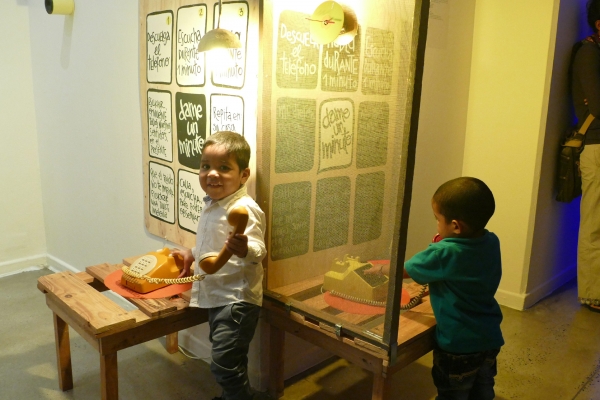
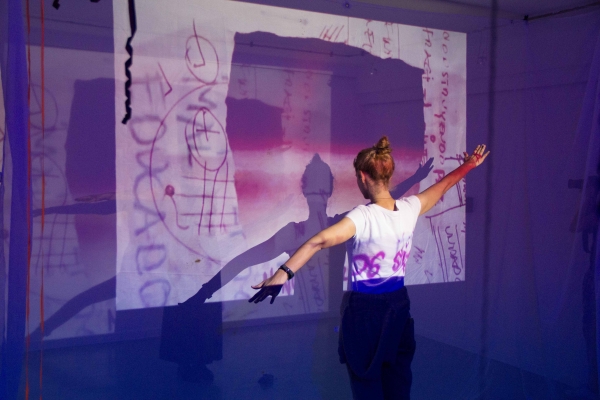
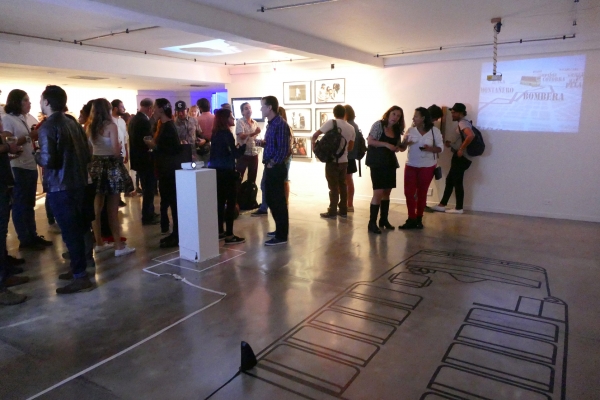
Reloj de Paz
or "clock of peace" is a wooden clock in the typical style of Salvador Dalí. The clock uses hour markings to represent the history of conflict in Colombia from the 1950s until the time peace negotiations started in the country. These milestones are expressed by images and archival sounds around the clock, which eventually enters a time zone for peace with sounds that are generated by the community.
The community project descriptions below were written by participants in American Arts Incubator — Colombia and focus on social inclusion and peace in the country. These projects were initiated during Nathan Ober's Incubator workshop and will continue to develop after the Incubator is complete.
Bordes
Discrimination by race, prejudice, or stereotypes are boundaries that generate loneliness and exclusion. The bus is a public space where people are solitary — they sleep, they stare at the sky, or look at their cell phones. We want to intervene in this experience by creating an interactive map of these stereotypes in which the bus's regular route crosses these boundaries.
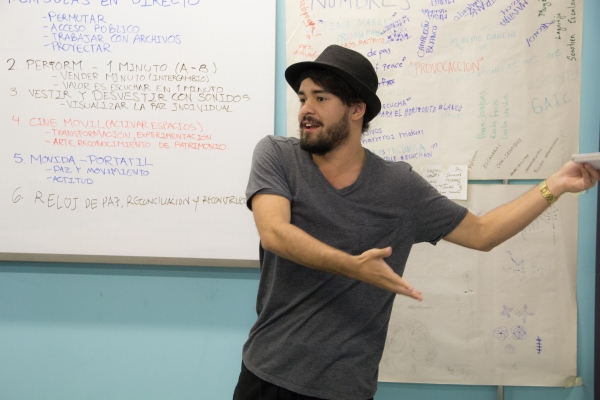
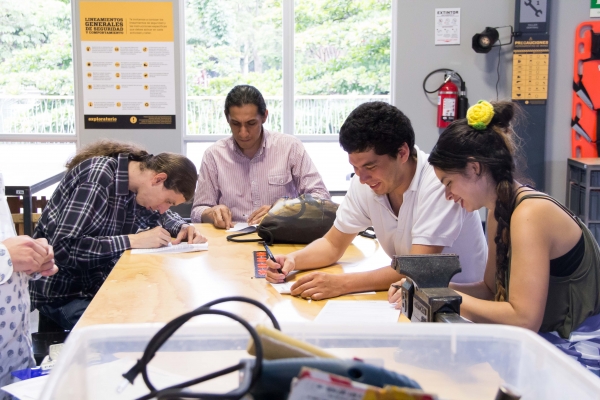
Ciudad Sensible
We will set up our project at different bridges in the city, which are symbols of transit but also symbols for the possibility to advance to different states of consciousness in which we do not seek to define the word "peace," but to investigate the different experiences and sensations tied to it. By sensations, we mean the ways in which we understand our existence and the existence of others.
We're proposing a modular installation which would combine different inputs such as ambient noises and vital sounds from the body: heart rate, breathing, swallowing, etc. to create new sounds and environments. These transmissions would pass through an interface which the user can manipulate according to their choice because we believe that "peace" is a personal decision. We want to create an opportunity that takes people out of their regular routine and allows them to reflect on the presence of and connection with others in their daily lives.
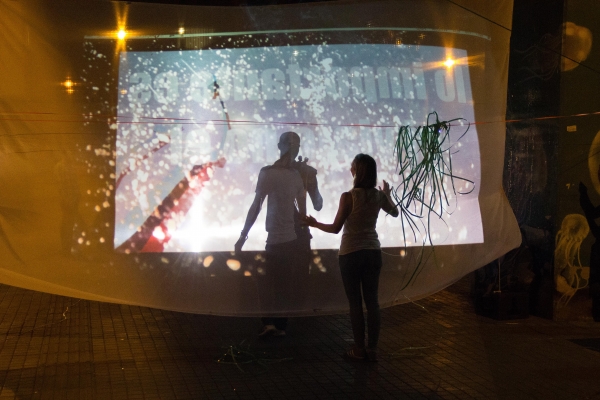
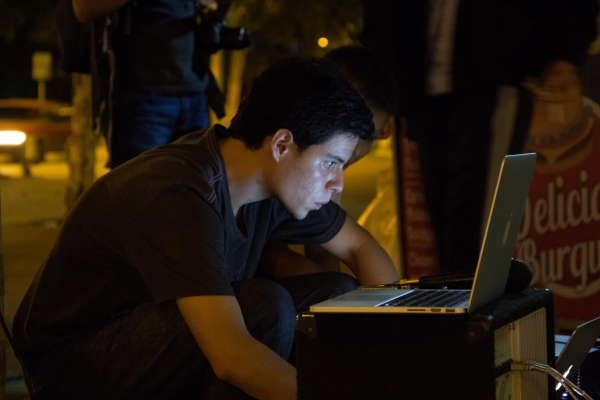
Reloj de paz
Reloj de paz, or "clock of peace," is a wooden clock in the typical style of Salvador Dalí. The clock uses hour markings to represent the history of conflict in Colombia from the 1950s until the time peace negotiations started in the country. These milestones are expressed by images and archival sounds around the clock, which eventually enters a time zone for peace with sounds that are generated by the community.
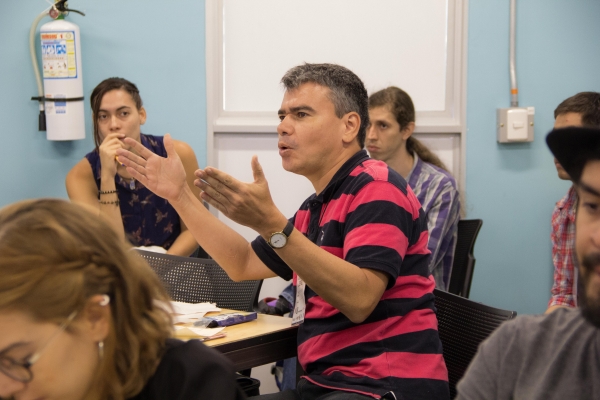
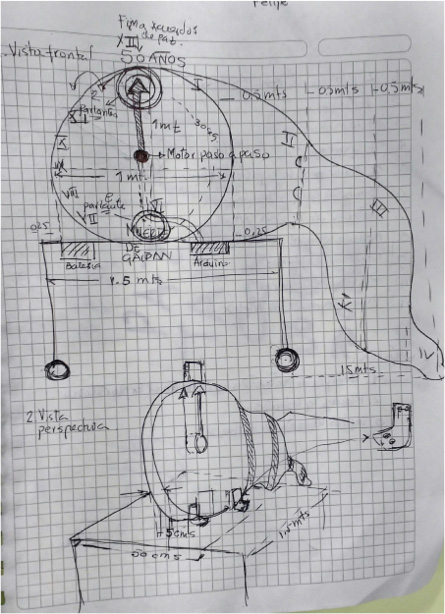
Tómate libre
We're forming a group of people from different campuses of the University of Antioquia to activate a creative space in the Niquitao neighborhood of Medellín. We want to connect with communities that are usually out of reach of established programs and help them access an interactive space where young people can experiment with different technologies and gain artistic skills.
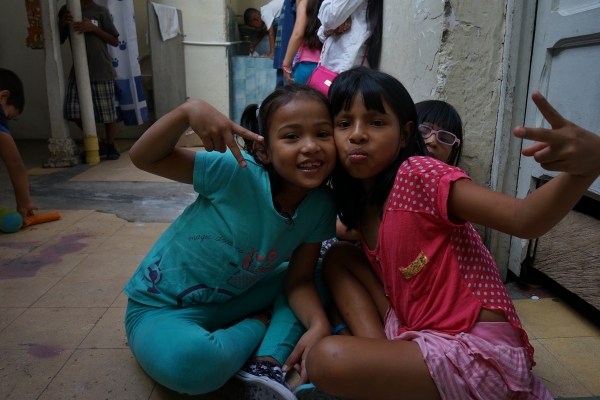
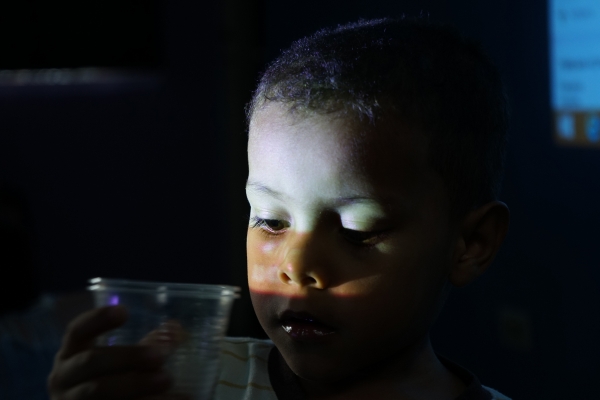
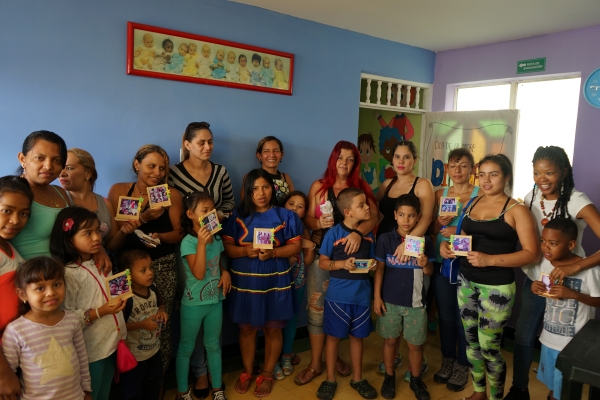
Last week, I took a small group on a field recording expedition. We hiked up a short mountain peak close to where I've been staying. As we traveled further up the side of the mountain, the city sounds began to dissipate and blur into a sea of fragmented voices and passing cars. Here we could hear the birds, and the wind blowing through the grass and trees. Here we could see from a tall vantage point all that lies below. Our mission was to record these sounds and plot their locations for an upcoming exhibit mapping the sounds of peace.
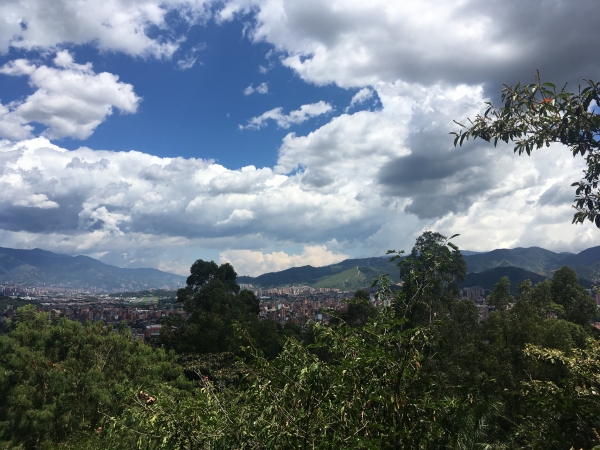
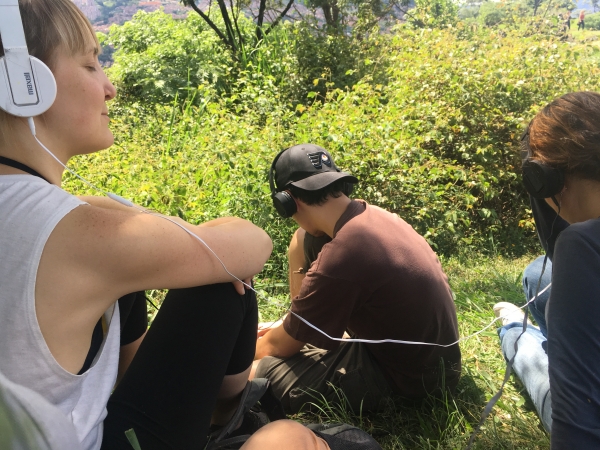
We were looking for some good spots to create multichannel audio recordings. We recorded with the Zoom H6 using its X/Y stereo imaging capsule along with two shure sm57 microphones and two custom built piezo-electric contact microphones.
At our first spot, we sat tethered together with headphones, silently listening to the world in contemplative meditation. We recorded for ten minutes and then moved along to our next destination. As we climbed to the top, we found a large metal tube and decided to attach our contact mics here and create a short performance of banging on the metal structure.
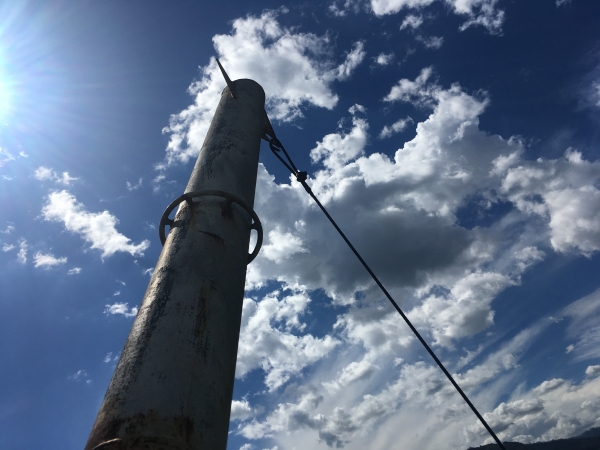
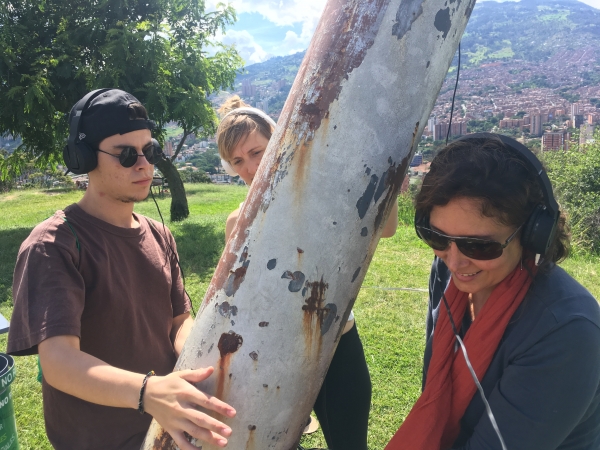
In our last spot, we sat beneath a tree and I attached the contact mics directly to the tree. We were all mesmerized by the sounds that were presented to us by this strange juxtaposition. The tree actually sounded like running water, and each time the wind blew across its branches we were able to hear the branches gently nudging and colliding with each other. The sounds were quite amazing and a pleasant surprise to us all. This was actually the first time I had ever performed such a task. I think from now on, I’ll be listening to trees more often.
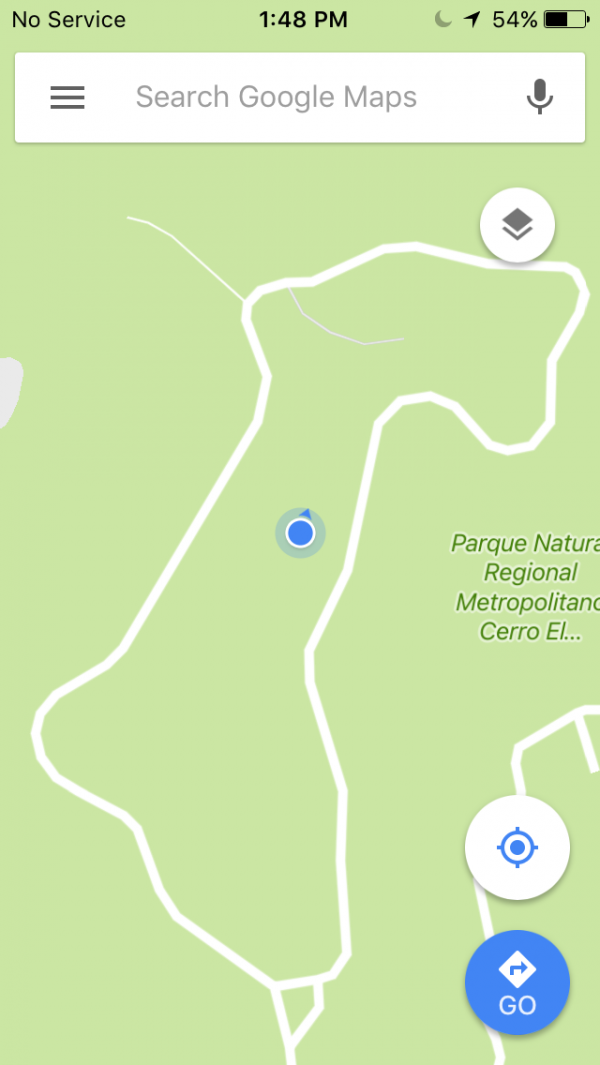
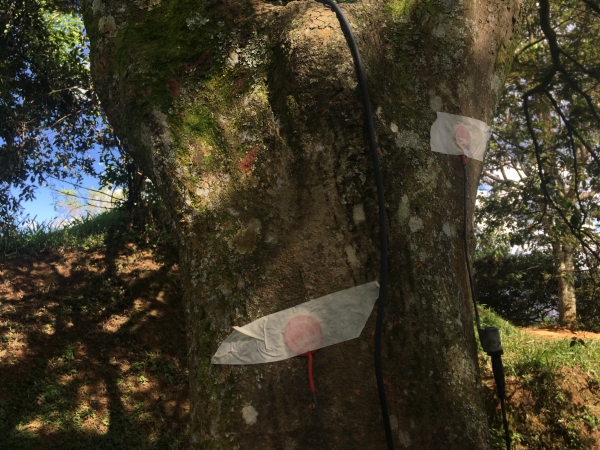
This experience gave us all some new ideas and perhaps even a few epiphanies. For the next week I’ll be collaborating with Monika Marquez for the upcoming exhibition. We'll set out to record the sounds of city of Medellín, including nature, urban environments, and the stories of the people of this great city—all within the context of listening to the sounds of peace.
Wow, this exchange has gone fast! I can't believe how quickly things have moved along. Below are videos from days three, four, and five of the workshop series.
On day three, we worked on prototyping and idea conceptualizations while day four was focused on video. Each participant was put into a group and given the task of creating a short video. The videos were meant to convey each member's interests and goals for the upcoming weeks. They turned out great, and each short video was truly unique and creative.
On day five, the participants were challenged to brainstorm and list out every project idea they wanted to pursue. This led to many long discussions on how to act as a community, and whether to vote for their favorites or choose more organically how each group would be formed. In the end, we had to table the decision for the weekend and come back on Monday morning for final picks.
DAY 3
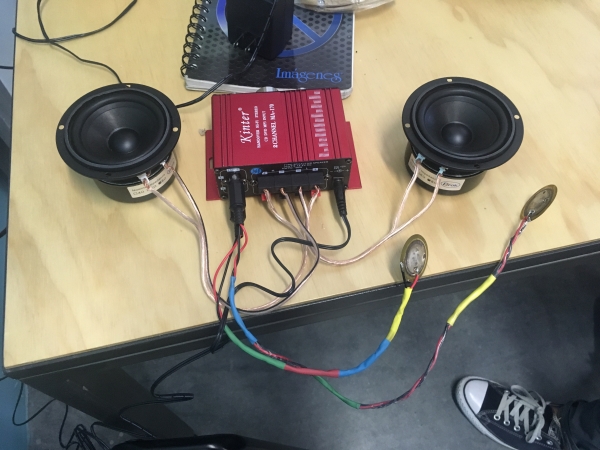
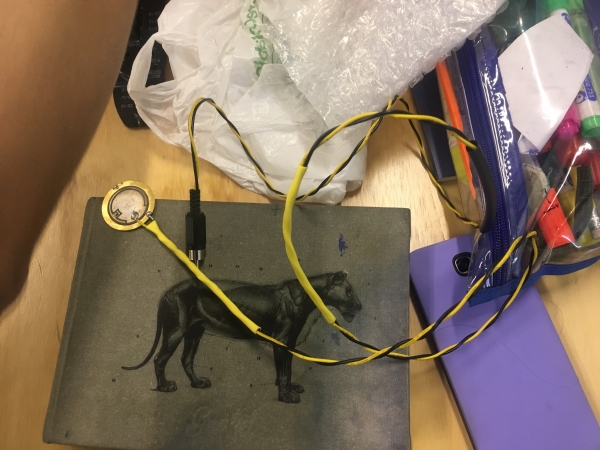
We’ve just wrapped up days 1 and 2 of the workshop series! This group is eager to learn and I can't wait to see what they create together in following weeks. Here are two videos from our first two workshops:
Day 1: Listen / Escucha
We came together for the first time as a group. Kate Spacek and I led discussions around sounds and how they influence our day to day lives while informing and shaping the world around us. We then sent the participants on a field recording scavenger hunt. They were arranged into four groups and had 30 minutes to find the following list of sounds:
☐ Sonido feliz (Happy Sound)
☐ Sonido triste (Sad Sound)
☐ Sonido enojado (Angry Sound)
☐ Sonido tranquilo (Peaceful sound)
☐ Melodía (Melody)
☐ Ruido (Noise)
☐ Sonido de la naturaleza (Sound of nature)
☐ Sonido de la tecnología (Sound of technology)
☐ Un eco (an echo)
☐ Agua (water)
☐ Aire (air)
☐ Ritmo (rhythm)
☐ Movimiento (motion)
☐ Silencio (silence)
☐ Empatía (empathy)
Day 2: Perceiving Vibrations / Building Custom Contact Microphones
A continuation of day 1 working with sound. We learned how to solder our own contact microphones and experimented with recording the vibrations of various objects, surfaces and resonant spaces. It was a hands on day and everyone made some sound!
Stay tuned for days 3-5!
I am just getting used to the busy sounds of the city here in Medellín, Colombia. As I approach the final hour before the American Arts Incubator program officially takes off, I am completely inspired and spellbound by what I have seen so far. During my first week, I was able to take in a bit of the culture and walk the streets with locals in search of the necessities (food, water and HDMI cables). I’ve also learned how to make delicious arepas and I’m currently learning to play the Tiple (the national instrument of Colombia).
Medellín, Colombia! It's as if the buildings and skyscrapers popped out from the jungle canopy — self propagating amongst the natural world. The sky is composed of a blanket of cool grey clouds that cover the mountain tops surrounding all that the eye can see. At night the mountains fade into obscurity but remain outlined and illuminated by the profusion of households and buildings inhabited by the citizens of this city.
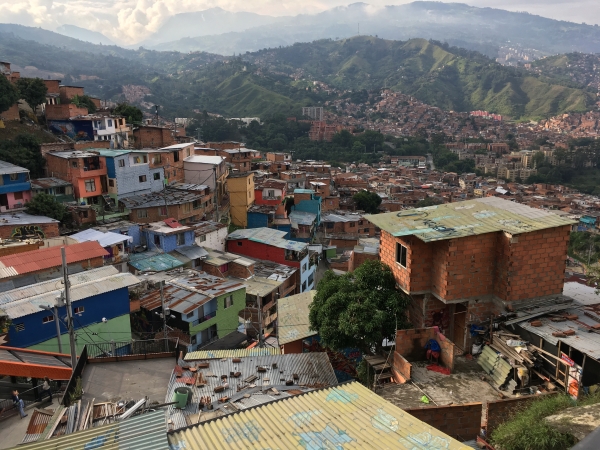
One of the most inspiring moments thus far was the graffiti tour that led me and a few others through the transformed streets of what was once regarded as the most violent and dangerous area of Medellín. Through art, an entire neighborhood was able to overcome the awful atrocities of war and conflict. The artists here took back the streets from the paramilitary and FARC and in the process gave life back to the community. Comuna 13 serves a perfect example of where art can (and has) changed the world. Ask anyone who lives there.
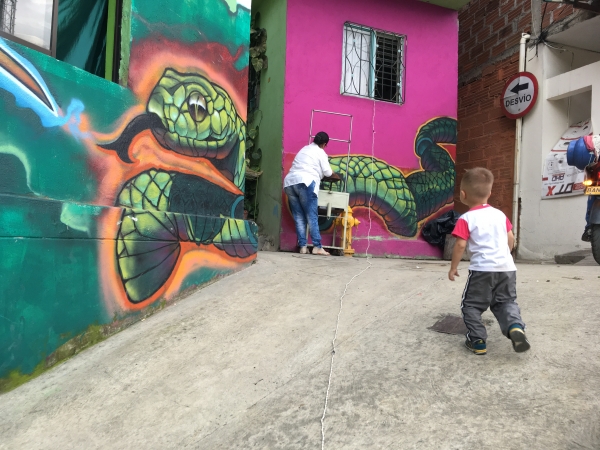
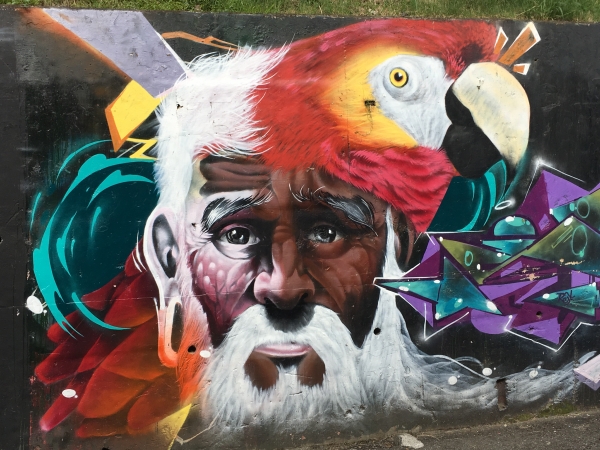
Today I was able to get a tour of the new Exploratorio at Parque Explora where I will be holding the workshop series on digital storytelling. The Exploratorio has graciously invited us to use their space for the entire month for our projects. The space is new and full of all the right equipment — from hammers and drills, to laser cutters and CNC machines! It’s a playground for making and harboring a new community of artists collaborating on the themes of social inclusion and peace. This Saturday we launch the program with our partner Colombo Americano at their space in downtown Medellín.
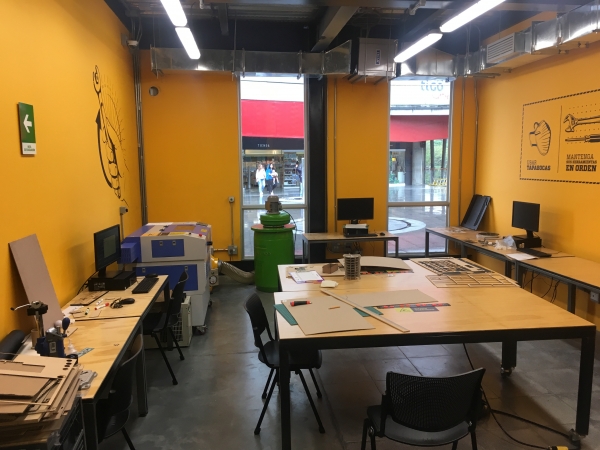
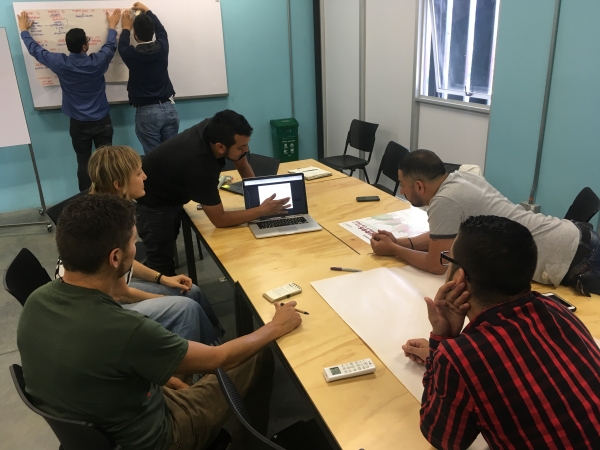
Find out more about our partners here:
What constitutes an artist community? And how can art contribute to and challenge political processes? As I prepare for my upcoming exchange trip to Colombia, I am asking these questions and finding answers in unlikely places. I’ve been living off of the grid in DIY communities in California — from the lush environment of Big Sur down to the dry desert heat in Joshua Tree. While the answers to these questions are still somewhat ambiguous, the reality of my living situation has provided a few graceful epiphanies along with many unforeseeable obstacles.
Sometimes mother nature has her way of becoming your most relevant concern. While living in Big Sur, the rain created many of these obstacles — from collapsing bridges to impassible landslides, creating miles of unreachable landscape. In fact, my temporary home at the Henry Miller Memorial Library lies just south of the recently collapsed Pfeiffer Canyon bridge, and so I was forced to evacuate until a bypass trail was created.
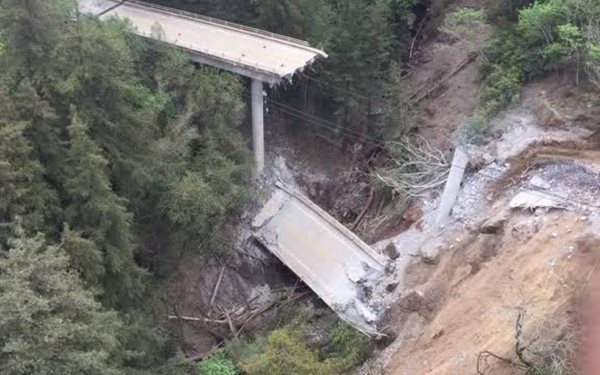
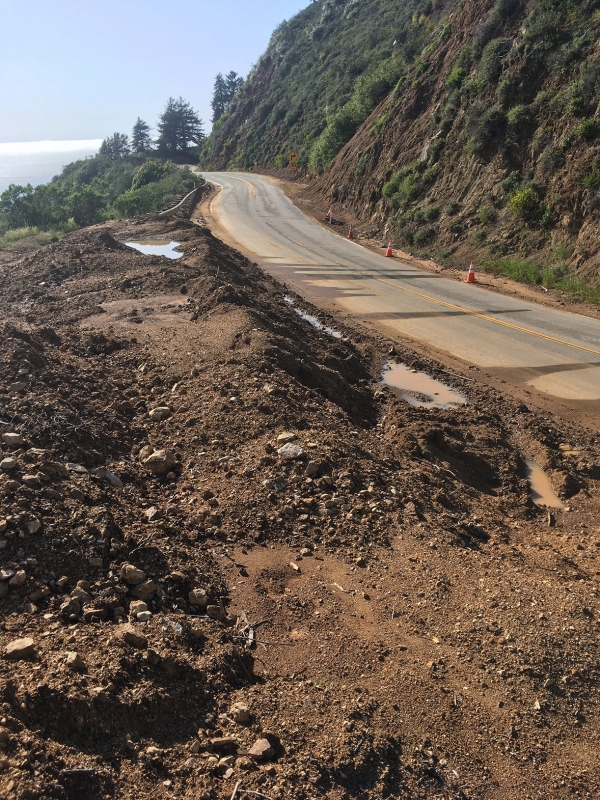
This real-world situation has given me much to ponder and question. How can a community focus on art when they can’t find food or water, or are forced out of their homes, during famine, extreme weather or at worst — during wartime? How can we as humans overcome these obstacles and define our lives in the midst of these life threatening events?
One of the first music shows I attended and helped out with at the Henry Miller Memorial Library was back in December of 2016 with Kendra McKinley and Kelly McFarling. A crowd of 60 or more people huddled together inside a room filled by candlelight and the crackling of a wood-burning stove. We were surrounded by visionaries from the past to the present — contained within the pages of a diverse collection of books from all walks of life. While on stage, Kelly mentioned how beautiful it was that in the midst of all the recent political turmoil and world events that we could still find it in our hearts to come together and listen to a woman sing about her emotions. It made me think about humanity and perhaps our crowning achievement, which in my mind is the celebration of artistic creation. Along with food and shelter — art, story, song and dance are vital to the human condition and when the world beats down on us it is art that serves to lift us up again.
My objective in Colombia is to create and foster these very kinds of “safe spaces” and creative environments. I believe that the act of creating art, especially in times of turmoil, is perhaps our most necessary combatant in creating a brighter future. Born out of necessity, art aims to congregate, engage and ponder life’s biggest questions — to hear and listen through another’s ears, to see the world through another’s eyes, to think for oneself and question the world at large.
To address these notions, I’ll be leading a workshop series in Colombia entitled, Digital Storytelling through Immersive Art and Tech. During the workshops we will be exploring a diverse range of topics and artistic techniques, allowing the participants to expand their own conceptions of what art is. We will build a greater communal discussion holding art as a centerpiece in dealing with social inclusion. We will be working with new digital fabrication techniques, sound and video production, device hacking, and projection mapping, which will lead to a series of four community projects addressing the topic of “Inclusive Memory for Peace”. The artist collective developed through these workshops will then expand to include artists, researchers and organizers from different backgrounds and social movements.
At this point, I cannot be certain of what will transpire or even what the ultimate outcome will look like, but as I begin packing and prepping for this upcoming exchange I become more aware not only of the difficulties but also the endless opportunities ahead. And as a final note to this chapter, I’d like to quote a man who, not through his own actions but through his life connections, led to the creation of one of the most humble and magical communities I’ve thus far encountered at the Henry Miller Memorial Library.

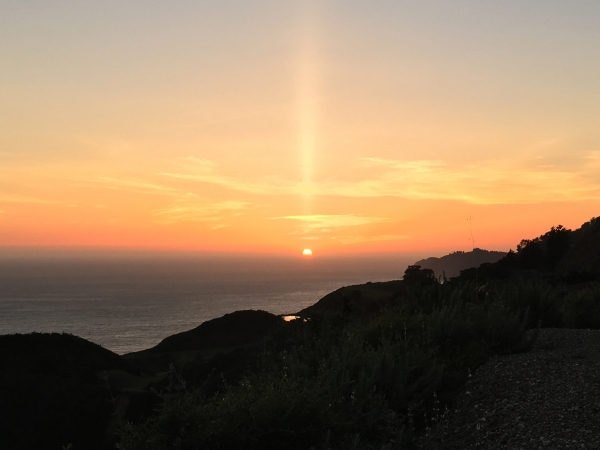
This past weekend I was asked to take part in the San José Paseo Public Prototyping Festival as a representative of ZERO1’s American Arts Incubator (AAI) program. The festival was created to celebrate the culmination of the San José State University Paseo Prototyping Challenge at the newly opened SJSU Hammer Theatre Center in downtown San José.
On Friday, I conducted a workshop with AAI program director, Kate Spacek, that was intended to mimic one of the first workshops we’ll be leading in Colombia. The workshop was designed to explore the relationships of people to their environments through the phenomena of sound. We had group discussions on what it means to listen, and how the sounds we hear shape and shift our perceptions of the world around us. I described some of the basic fundamentals of sound, as both a physical phenomena (physical vibrations) and perceptual phenomena (our cognition of these vibrations). Following the series of short listening exercises, participants were able to experience some hands-on building and electronics soldering. Each person built their own contact microphone that they were able to take with them at the end of the day.
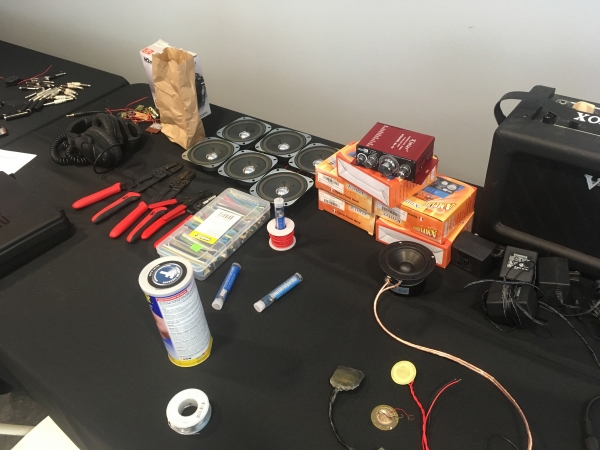
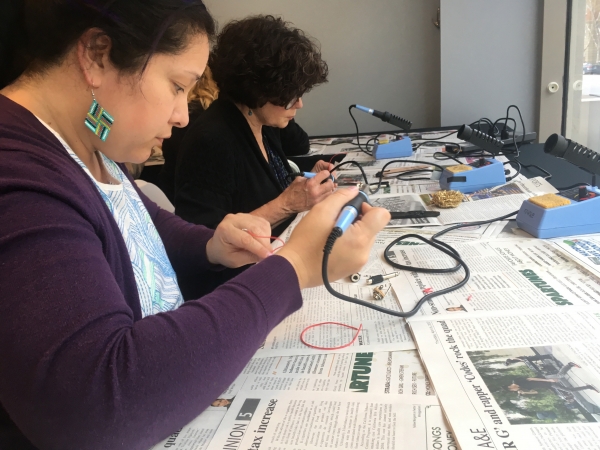
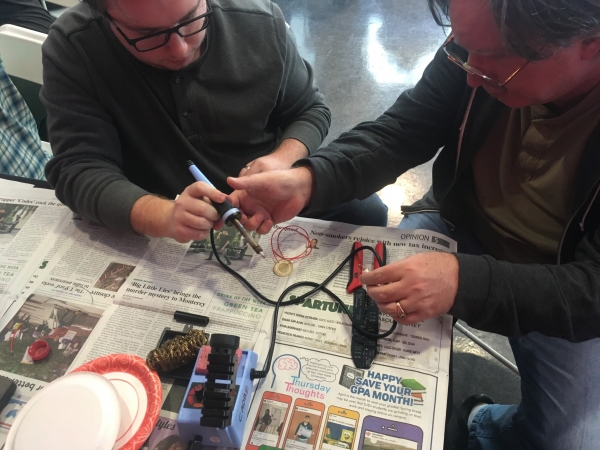
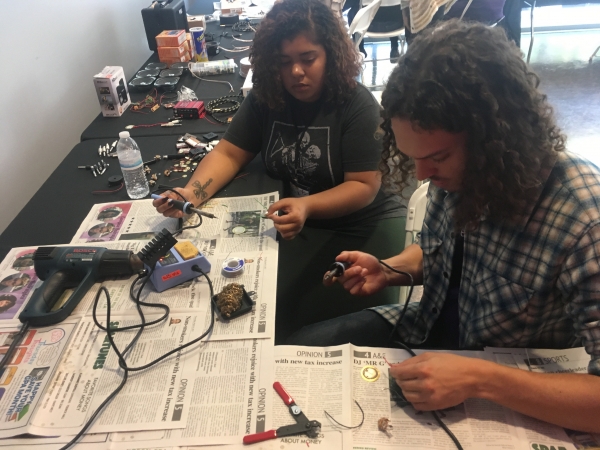
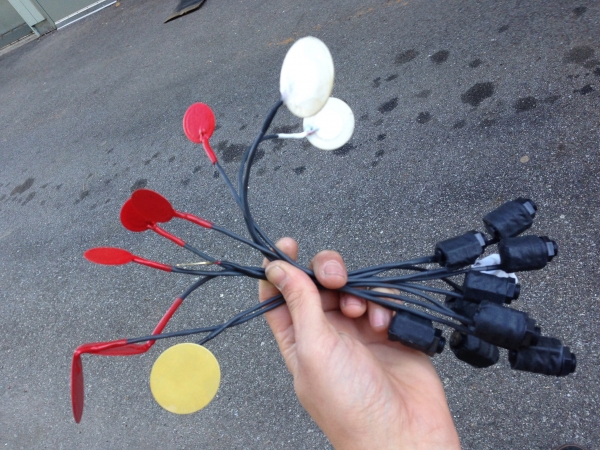
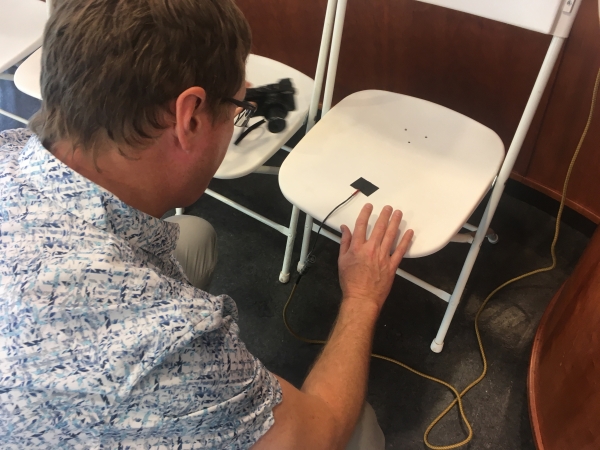
The ability to use this workshop as a trial run for the upcoming series I’ll be leading in Colombia was of great help. It provided many insights into the nature of working in small groups around large issues and topics that are often hard to talk about. Through the listening exercises, one of the topics that arose was the idea of memory and attaching or retrieving a memory from a sound experience. How does the sound in our environment effect our own emotions and thoughts? And how can we strive for empathy through listening to others?
As the workshop came to a close we discussed all the lessons of the day and shared many new takeaways for the participants, as well as Kate and myself. We emphasized that listening is an active process rather than passive, and that the practice of listening can be a building block to fostering understanding and unity. One of our main objectives was to expand perspectives and explore sound spectrums while in the process discovering how each person’s hearing is different.
This is the first in a series of workshops. Moving forward through the AAI program we will begin growing ideas for public project concepts that use the techniques we learn throughout the week to engage community into a new kind of dialogue around social inclusion.
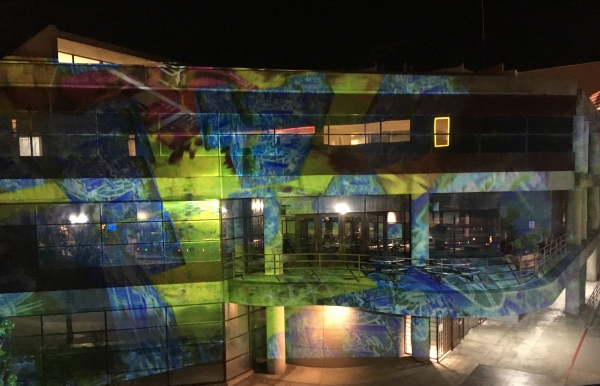
In addition to the workshops, I was asked to create some large-scale projections on the facade of the US government building that sits opposite the Hammer Theatre. The content projected was a mix of futuristic illustrations of green city planning, Buckminster Fuller diagrams, and nature intertwined and mashed together to create a visual experience for festival goers and passersby.
PASEO Prototyping Festival - San Jose, CA from Nathaniel I Ober on Vimeo.
I am beginning to solidify my proposal and workshop series for my upcoming trip to Medellín, Colombia with ZERO1 in partnership with the U.S. State Department’s Bureau of Educational and Cultural Affairs. The exchange will take place in May and June 2017.
Colombia has seen civil conflict for nearly 60 years. In recent years, they've been striving for peace within the communities that have been victimized. Current negotiations between the FARC and the Colombian government are at a standstill, meanwhile President Santos has been awarded the Nobel Peace prize for his efforts in the peace process.
These issues and their complexities can be intimidating and overwhelming to address, which is why I feel it is more important than ever to create community. Through art we can build community and address difficult issues that are often hard to talk about. In Colombia, I will be researching and strategizing ways to create “safe spaces” and communal environments where creativity and openness become the founding principles of a community-driven arts collective. This may take the form of a maker-space, an artist collective, or even a virtual hub to connect individual artists and their interests to a central point of engagement. The space itself, will strive to be inclusive of all people from all backgrounds with a strong emphasis on collaboration.
My personal interests combine art, technology, music and astrophysics to convey information of the natural world into ideas that can reveal the patterns and connections of lifeforms found throughout nature. Using my artistic practice as a starting point, I will address the needs of the group through a series of interrelated workshops focusing on the tools widely available to digital artists of the 21st century. As a team, we will explore the ways in which artists can help facilitate change within social and political processes. This project and workshop series aims to give voice to those who are often left out of the conversation and most dramatically affected.
I look forward to sharing more as this project develops!